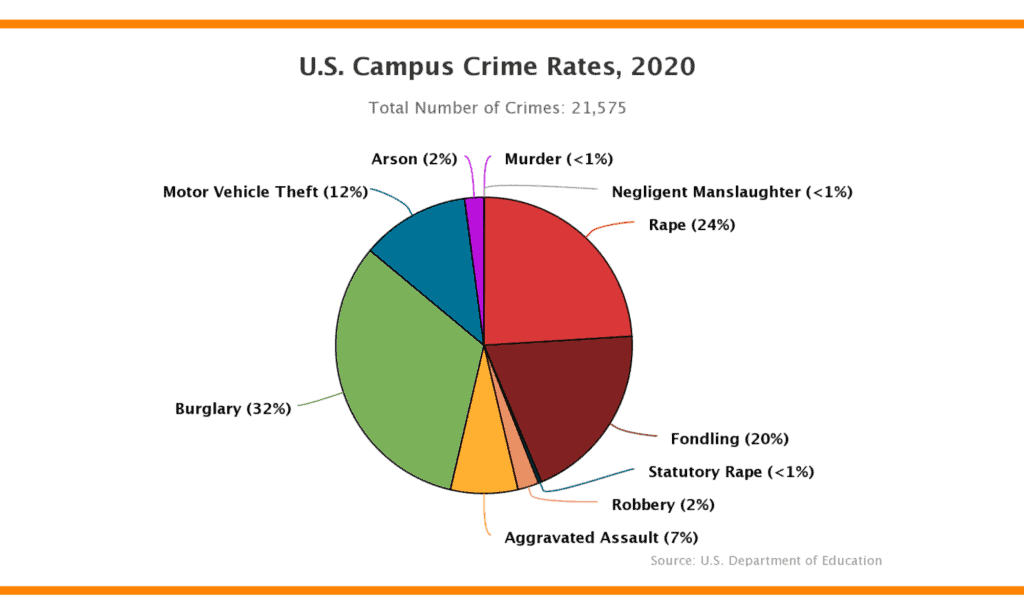Ah the start of a new school year is typically exciting for students and a little daunting for parents. New classes, new place to live, new people and possibly a new city, and all the uncertainty that comes along with it. As post secondary campuses begin to populate again, protecting students, faculty and the residents of the area are a top priority for campus security. Ensuring security is contacted swiftly and responds appropriately is not only a comfort on campus but a deterrent to crime.
As parents looking to send their kids off on their next path, campus safety tops the list of criteria alongside academics. Students generally spend 4+ years attending classes at the same campus, it is important to know that the university your student will be spending most of their time, is a safe facility. Not only is on-campus safety and policy a major factor when considering a school but also the safety of the surrounding area. What kinds of safety measures does the school have in place? Knowing the school’s policies and procedures concerning student safety can be useful in deciding whether it is the right fit.
As postsecondary facilities experience an increased number of on-campus students and facility post-COVID, historical patrol procedures are unable to mitigate, monitor, and document incidents in a timely way. Standardizing equipment and procedures with integrated system technology with active incident training is required. Centralized live reporting systems ensure a quicker response to incidents or maintenance issues. This provides more accuracy in statistics and allows for better deployment of staff, increased efficiency in patrols, and faster identification of those involved.
Some of the most common campus security concerns are:
- The inability to reach, respond, and communicate quickly
- The inability to fully understand the incident verbally to deploy the appropriate response
- The inability to deal with, and archive discreet information
- Failure to upgrade systems due to budget

The most prevalent crimes committed on college campuses include burglary, motor vehicle theft, sexual assault and fondling, harassment, and discrimination complaints. According to stats Canada in 2019, one in ten women students who were attending postsecondary school had been sexually assaulted in the postsecondary setting in the preceding year—approximately 110,000 individual women students. Additionally, almost one in seven women (15%) stated that they had been sexually assaulted in the postsecondary setting at one time during their time at school (either in the previous year or before). This represented approximately 197,000 women. And sexual assault was twice as likely among bisexual students and students living with disabilities. Although statistically lower (4%) of men reported incidents as well.
Sexual assaults that happened on campus also most often happened in a non-residential location, (such as a library, cafeteria, or gym) as indicated by 41% of women and 36% of men who had experienced an on-campus sexual assault.
The affects of all on-campus crimes reported often cause other social issues such as post-traumatic stress disorder, substance abuse, and mental health issues leading to increased resource requirements for institutions.

An innovative technology out of the UK is changing the way security is being provided and addresses the common institutional issues while providing piece of mind and rapid response. The technology behind ResponseEye is the same technology that Police, and Fire agencies are using called 911eye. Although this technology may seem complex in the back end, for users it’s a simple cell phone click. Walk around any campus and you’d be hard-pressed to find a student who didn’t have a mobile device at all times.
Without downloading or installing an app, ResponsEye works via SMS text message or email. For example, the student is in an unsafe situation and calls campus security, much like the public would call 911. Immediately the call taker sends a text or email to the caller while on the call with them. By clicking on the URL link contained within the text message or email, a secure ‘one-time-use’ live video stream is enabled. The stream allows the call taker the ability to see and hear the incident live , assess how serious it is and decide how to proceed or who to contact. As an additional safety tool, the caller’s direct location is provided via GPS coordinates, which are both automatically plotted on an on-screen map and dynamically refreshed, providing visible, real-time updates to their position, even if they are moving.
If there are several calls about the same incident the responder can review multiple incoming streams from different callers in one session to provide even better situational awareness. These streams can be securely shared with colleagues or police to further support decision making and streamed live to additional responders to give them eyes on an incident before arriving at the scene, aiding a swift response.
Better yet, this live video is captured by ResponsEye and stored in a Canadian cloud-hosted service for review, and if required is archive for accurate incident evidence and security reporting. Readily affordable to Canadian colleges and universities ResponsEye has proven to not only protect campus-life but instill a general sense of security and deter crime.
When seeking out post secondary schools keep safety as a top priority and ask about the systems, technology, and procedures that are in place. Implementing a concrete and technology savvy communications system protects students, faculty, and campus’ reputation.
~Cherene Kambeitz, Marketing & Communications Director – Levvel inc.
Learn how we keep Business in Balance every day.
Subscribe now for Levvel insights and info.

